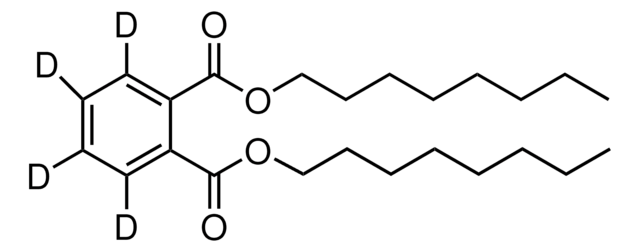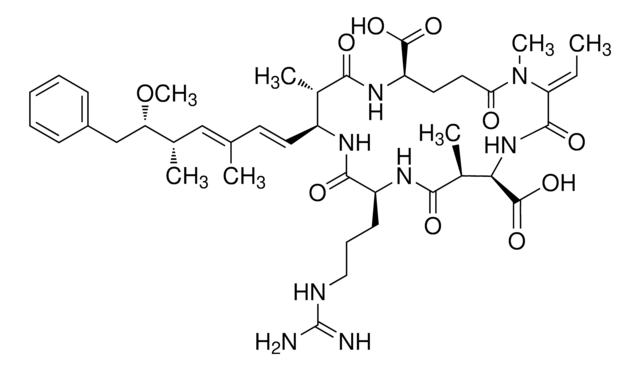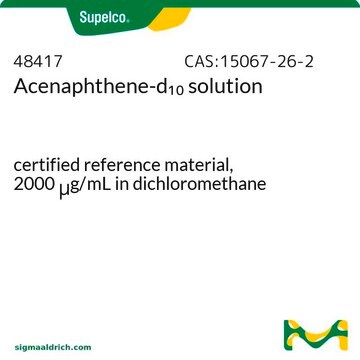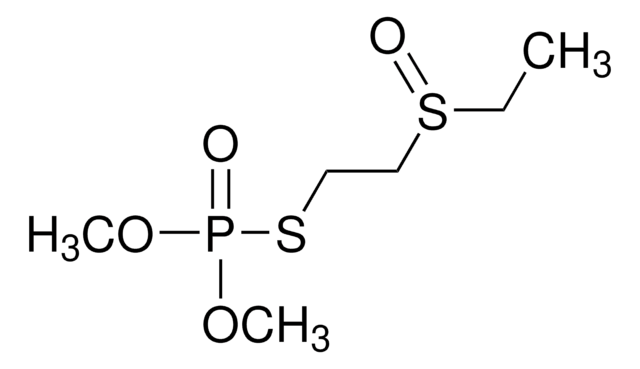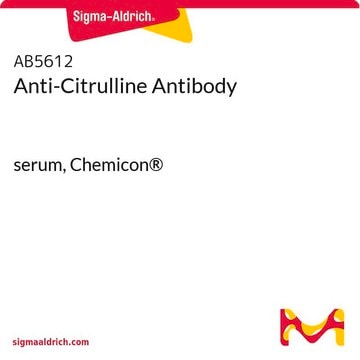O9640
Oleandrin
≥98% (HPLC)
Synonym(s):
5β,20(22)-Cardenolide-3β,14,16β-triol-3-([2,6-dideoxy-3-O-methyl-α-L-arabinohexopyranosyl]oxy) 16-acetate, Corrigen, Foliandrin, Folinerin, Neriol, Neriolin, Neriostene
About This Item
Recommended Products
assay
≥98% (HPLC)
form
powder
color
white to off-white
solubility
DMSO: >20 mg/mL
storage temp.
room temp
SMILES string
CO[C@H]1C[C@@H](O[C@@H](C)[C@@H]1O)O[C@H]2CC[C@@]3(C)C(CCC4C3CC[C@]5(C)[C@H]([C@H](C[C@]45O)OC(C)=O)C6=CC(=O)OC6)C2
InChI
1S/C32H48O9/c1-17-29(35)24(37-5)14-27(39-17)41-21-8-10-30(3)20(13-21)6-7-23-22(30)9-11-31(4)28(19-12-26(34)38-16-19)25(40-18(2)33)15-32(23,31)36/h12,17,20-25,27-29,35-36H,6-11,13-16H2,1-5H3/t17-,20+,21-,22-,23+,24-,25-,27-,28-,29-,30-,31+,32-/m0/s1
InChI key
JLPDBLFIVFSOCC-XYXFTTADSA-N
Looking for similar products? Visit Product Comparison Guide
Biochem/physiol Actions
signalword
Danger
hcodes
Hazard Classifications
Acute Tox. 2 Inhalation - Acute Tox. 2 Oral - STOT RE 2
Storage Class
6.1A - Combustible acute toxic Cat. 1 and 2 / very toxic hazardous materials
wgk_germany
WGK 2
flash_point_f
Not applicable
flash_point_c
Not applicable
Choose from one of the most recent versions:
Certificates of Analysis (COA)
Don't see the Right Version?
If you require a particular version, you can look up a specific certificate by the Lot or Batch number.
Already Own This Product?
Find documentation for the products that you have recently purchased in the Document Library.
Our team of scientists has experience in all areas of research including Life Science, Material Science, Chemical Synthesis, Chromatography, Analytical and many others.
Contact Technical Service

